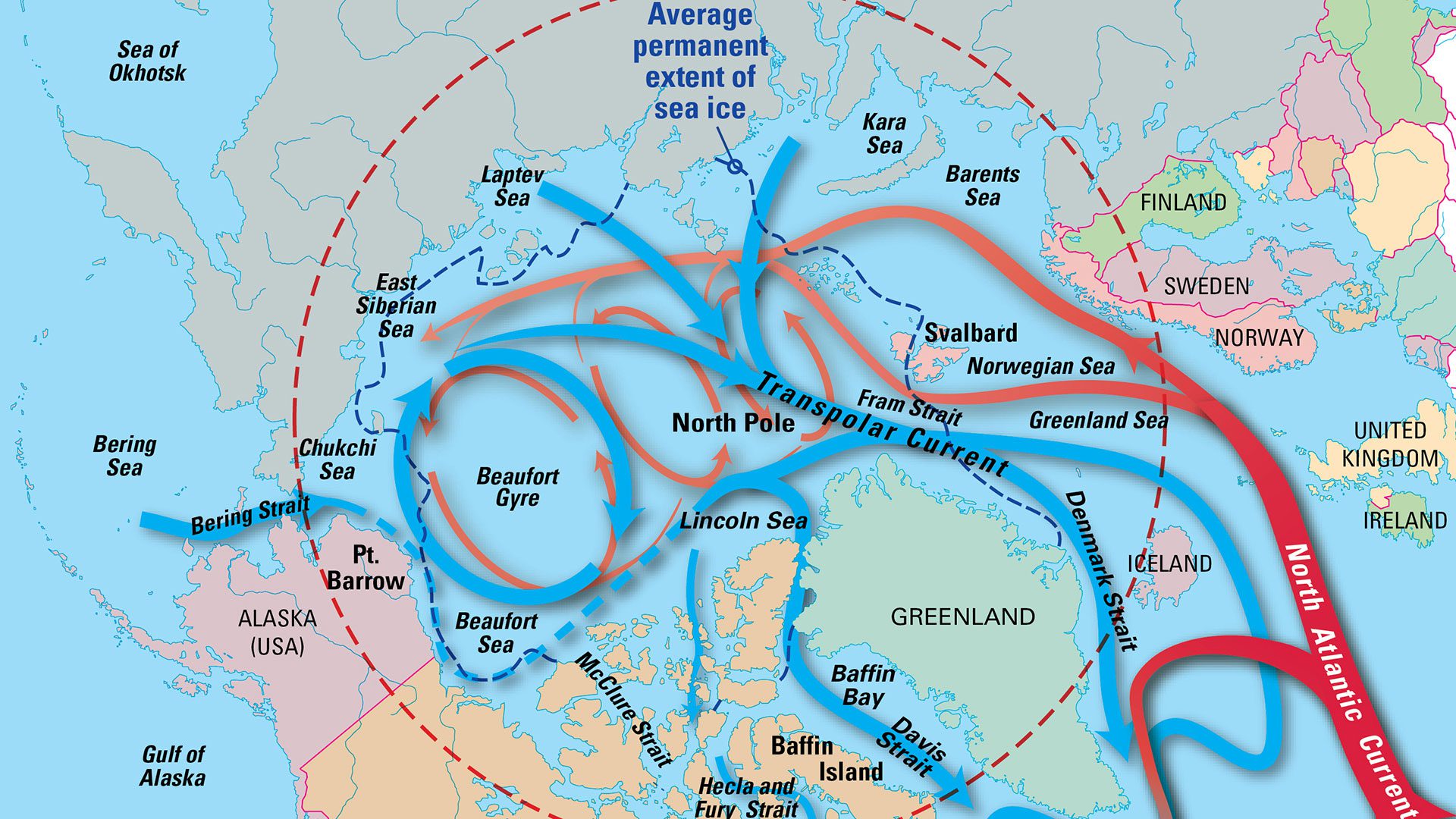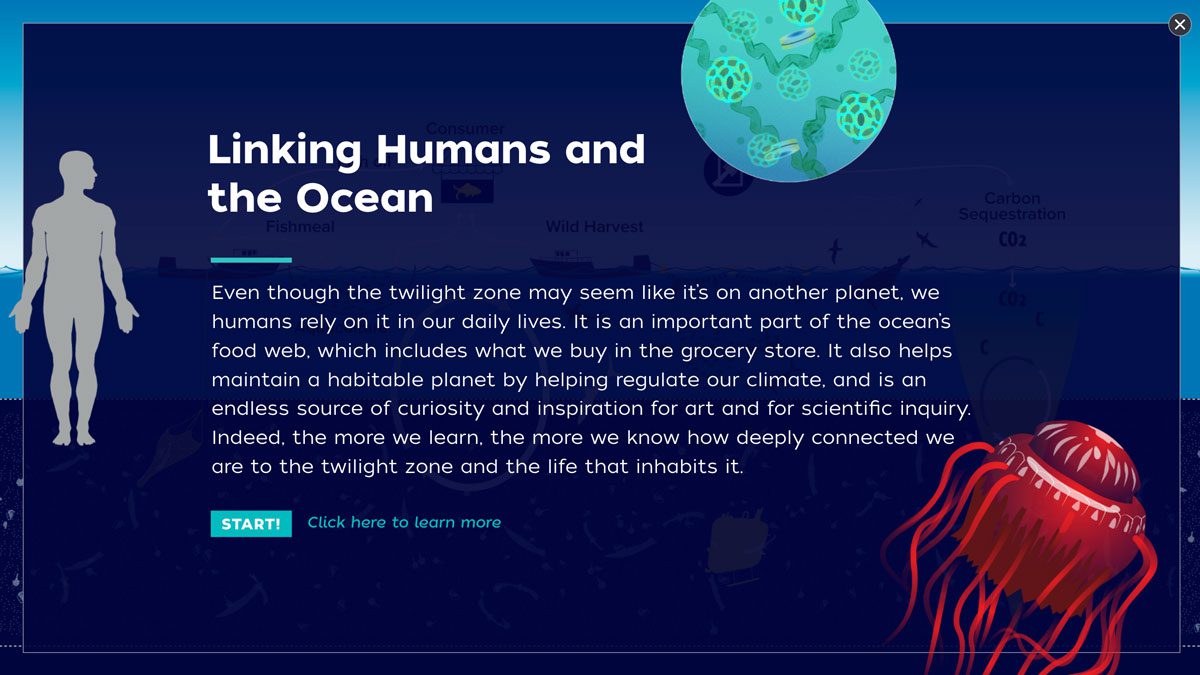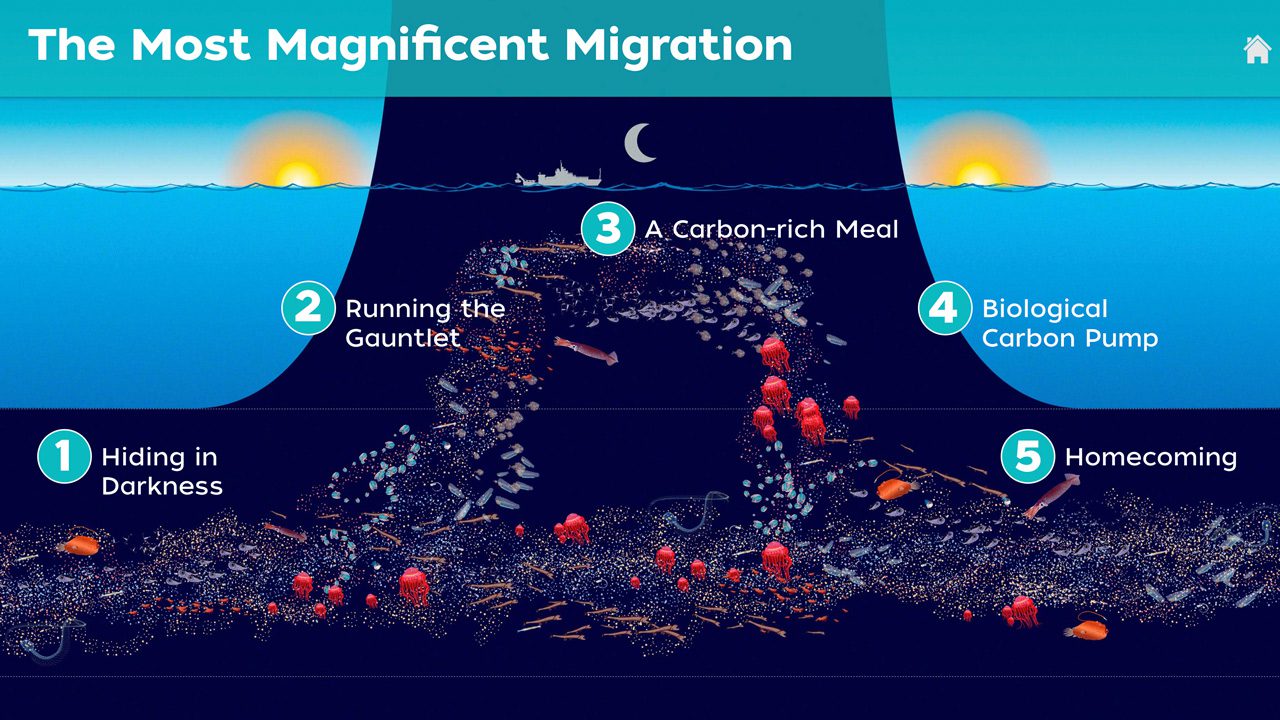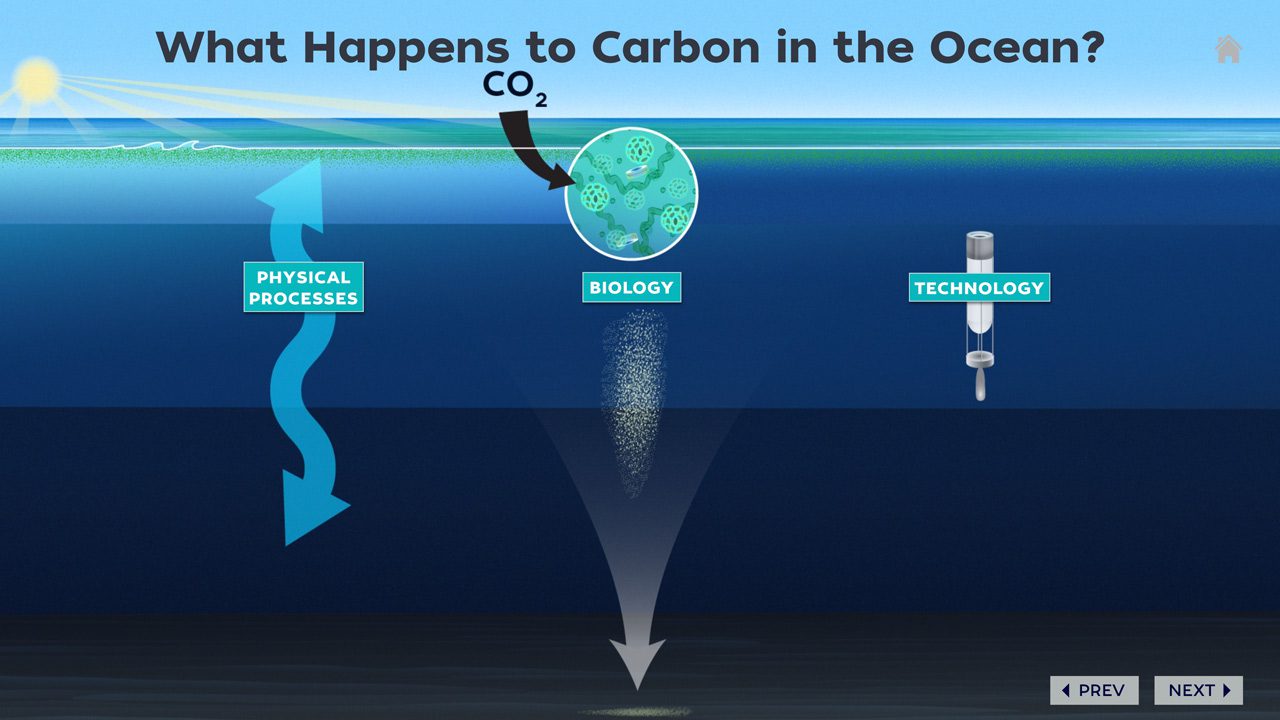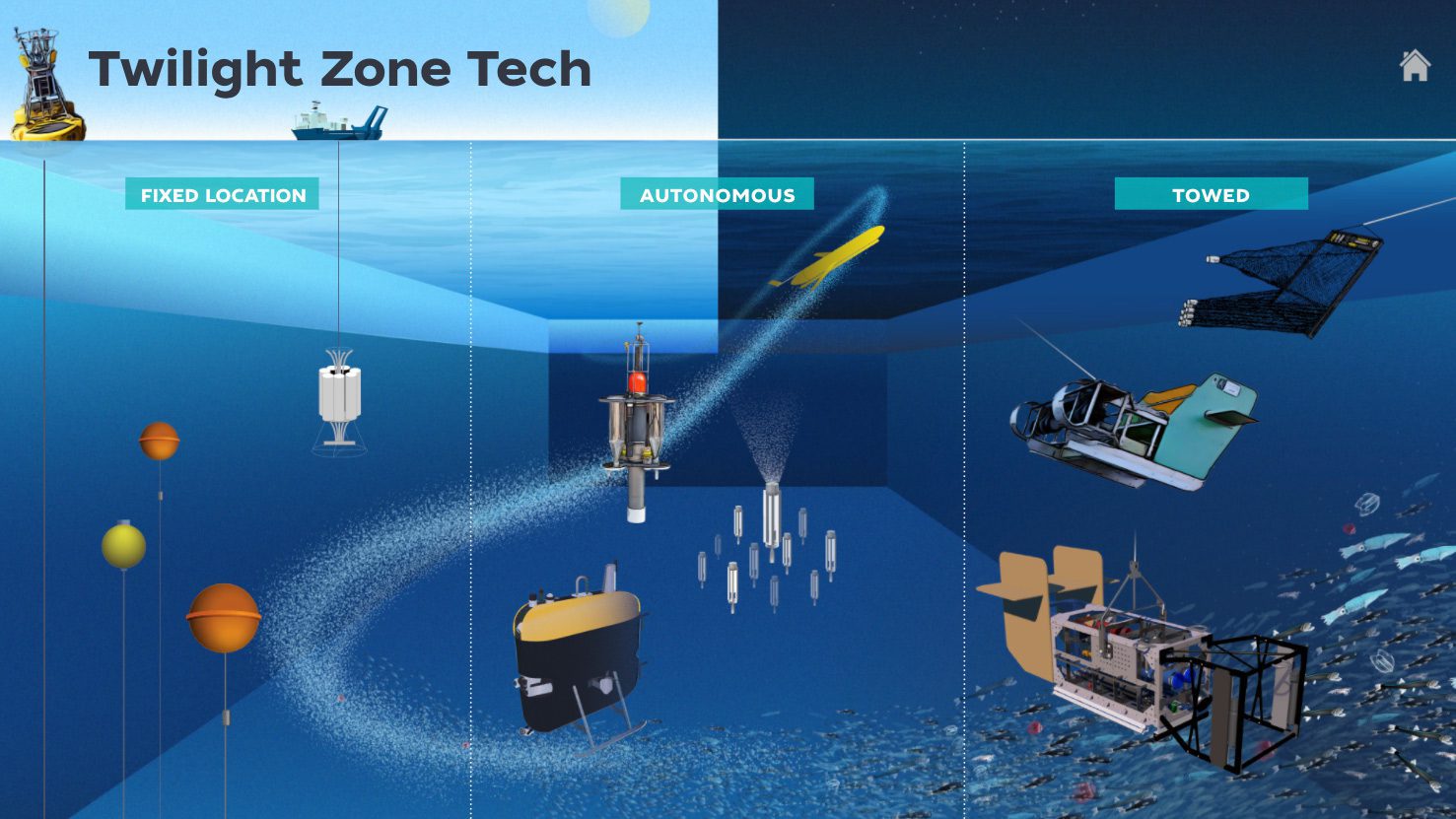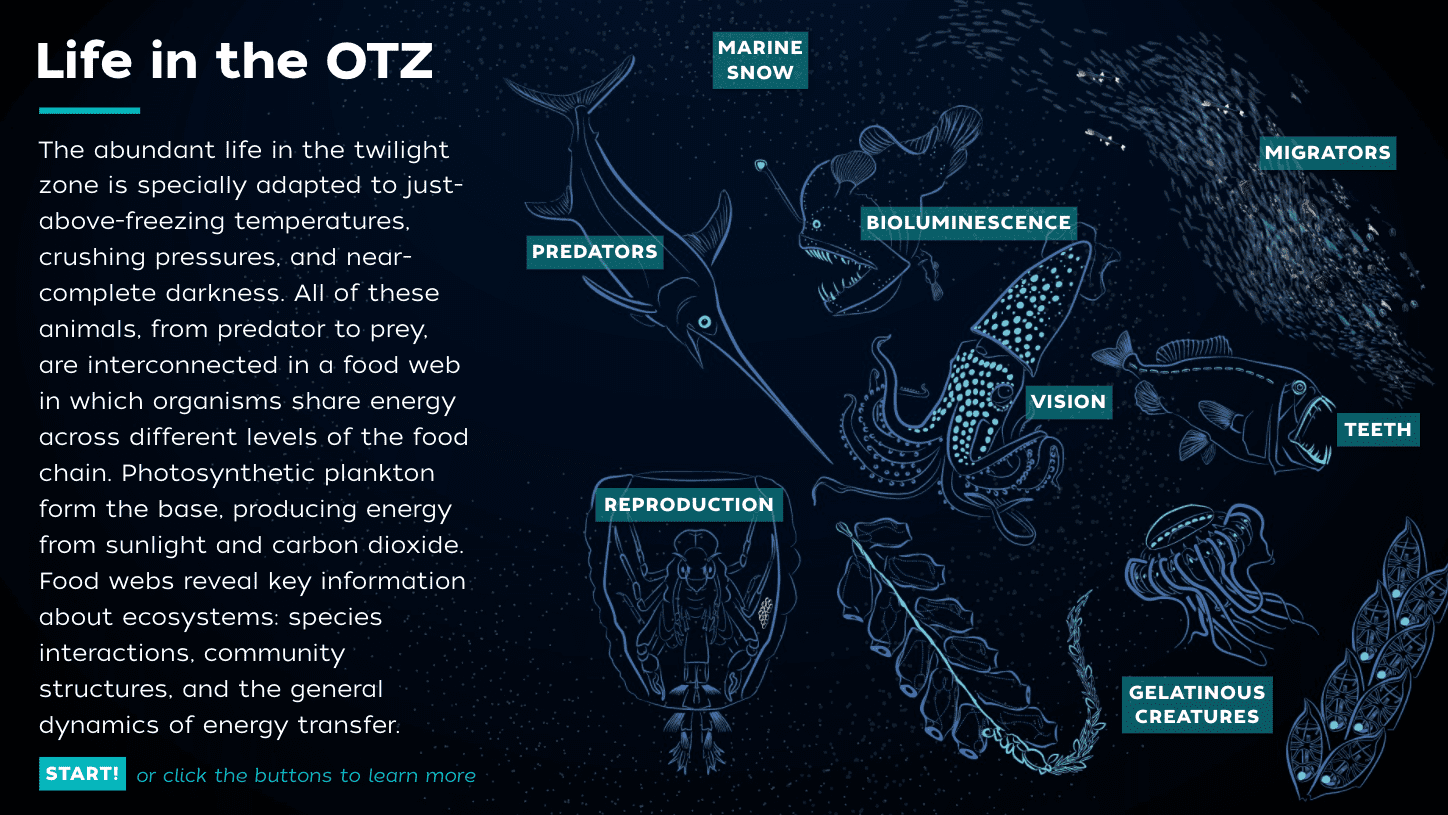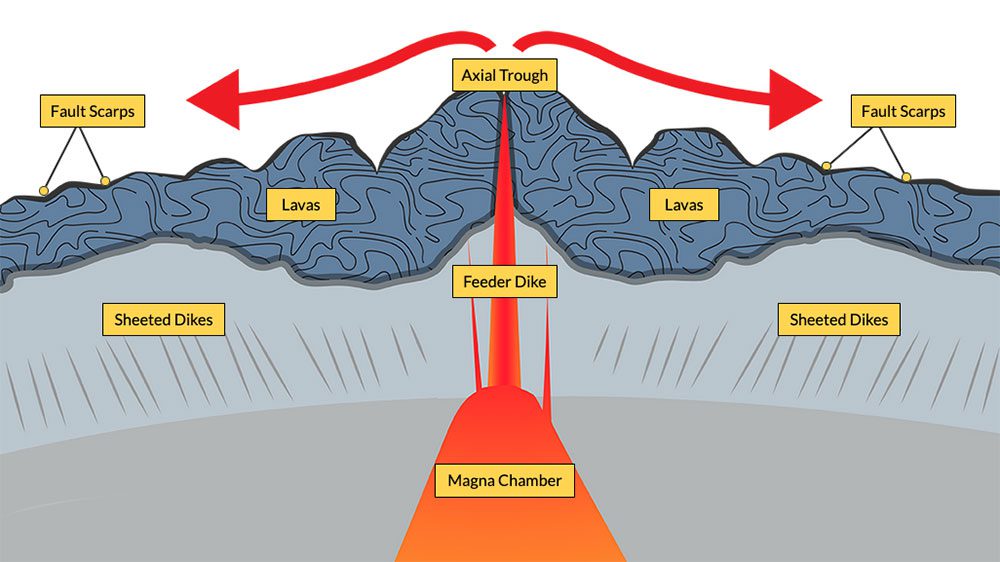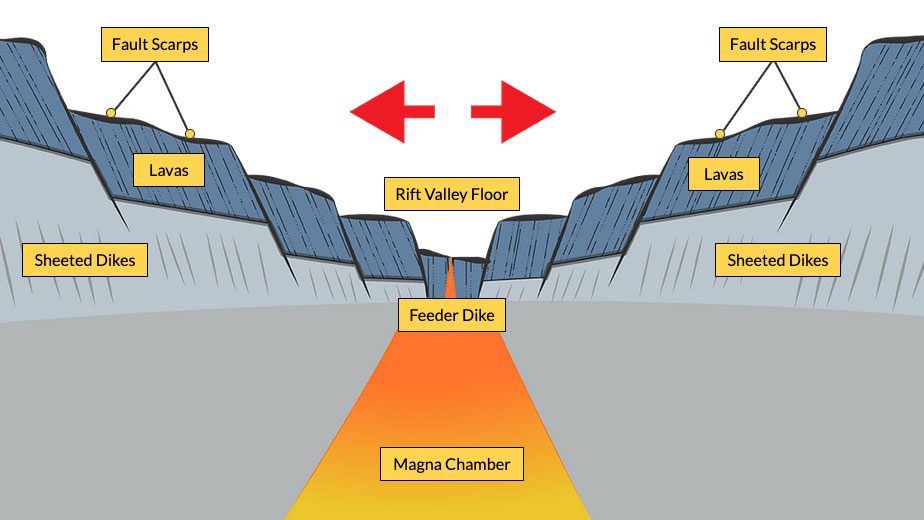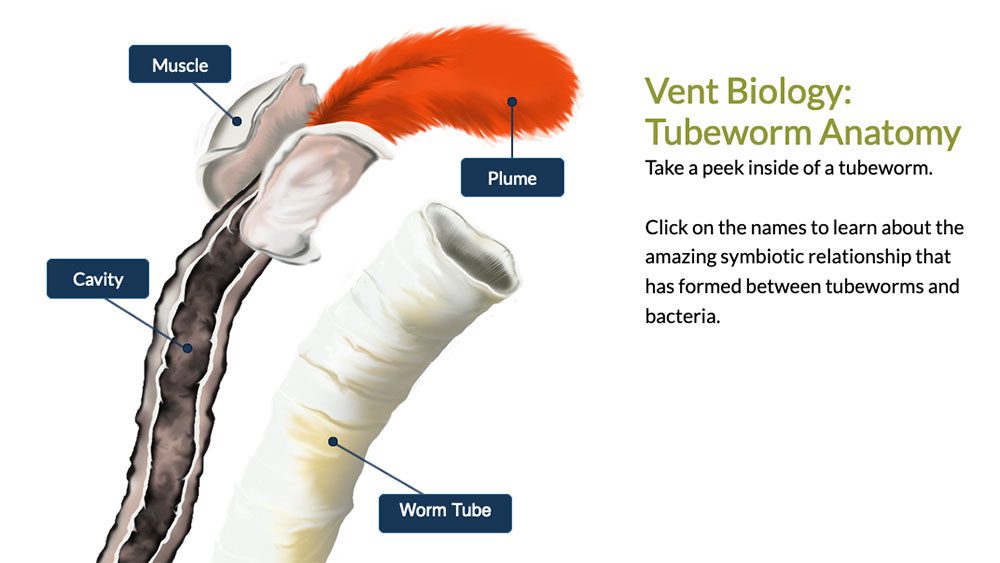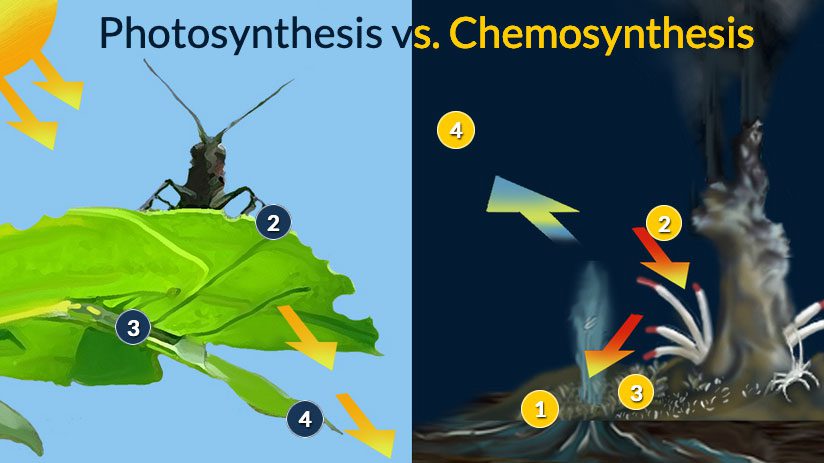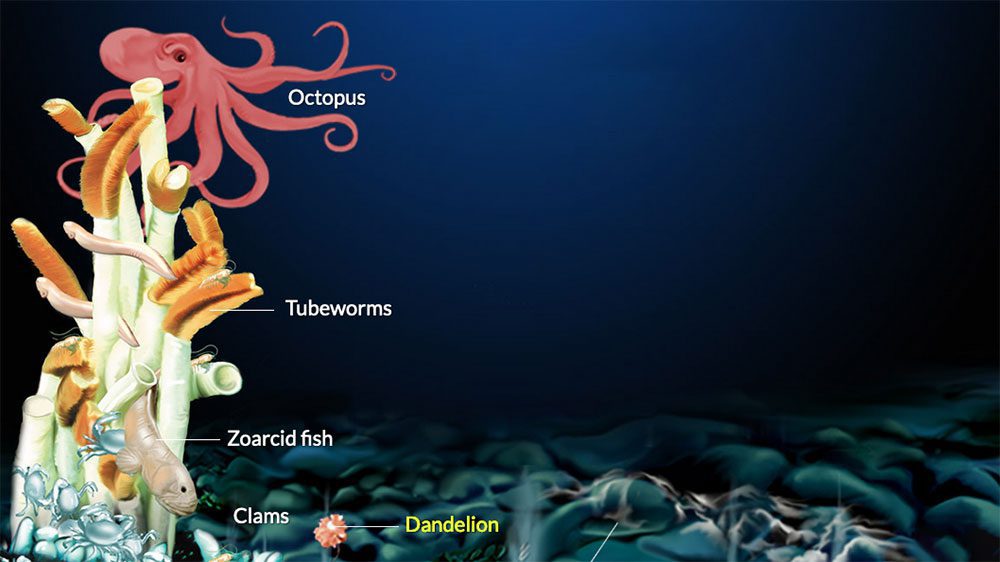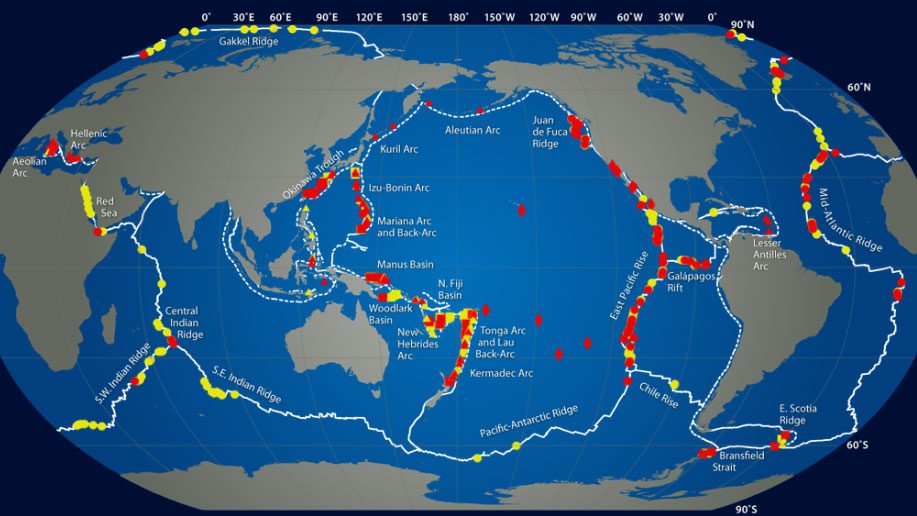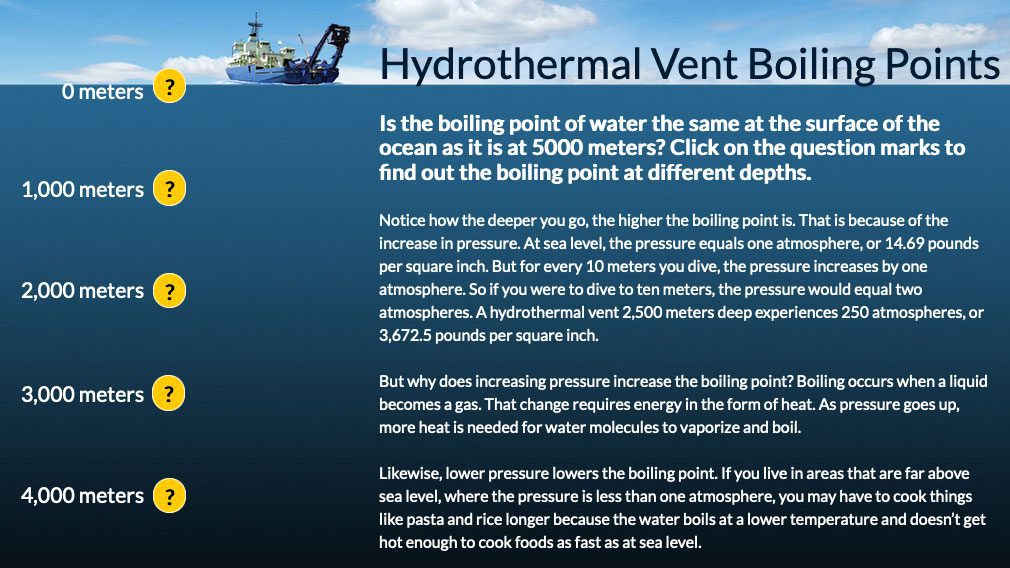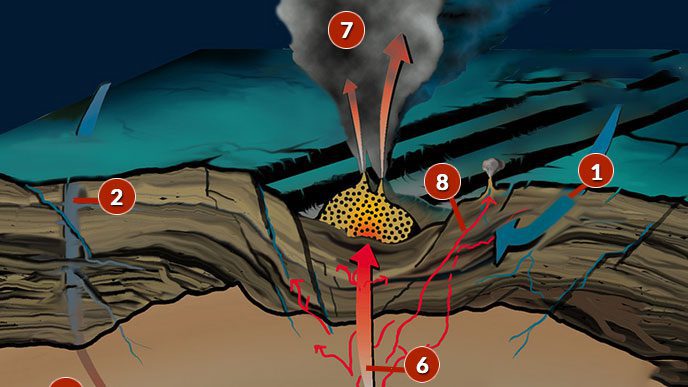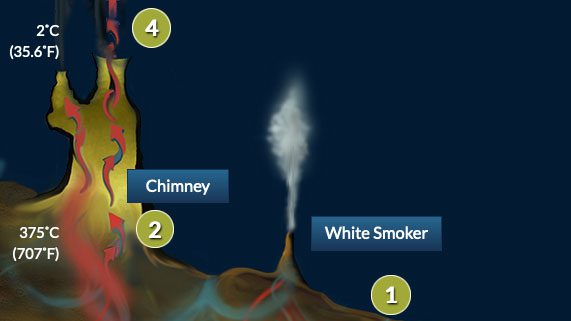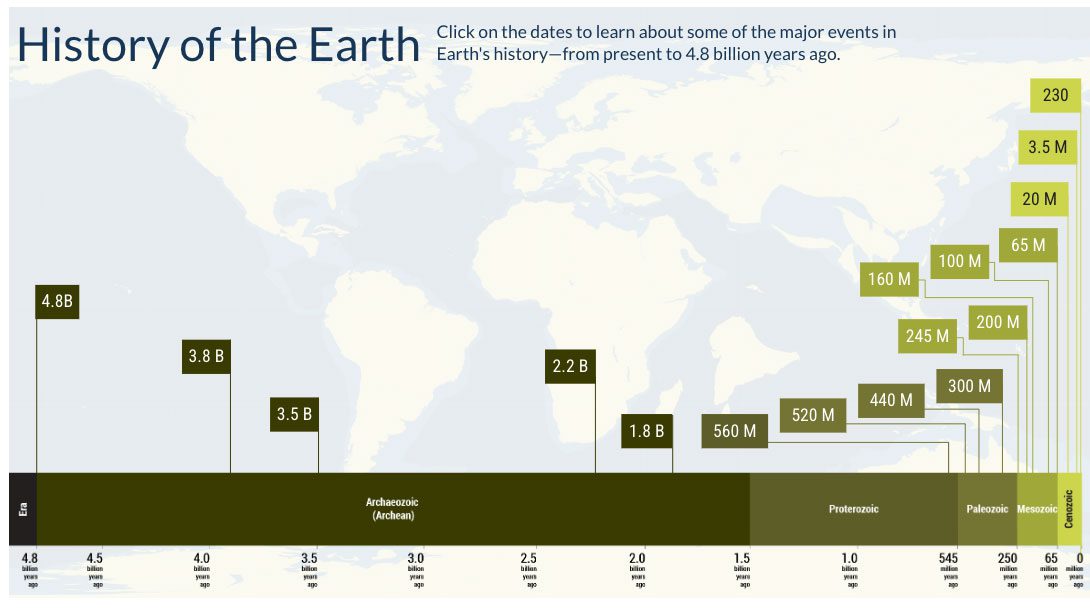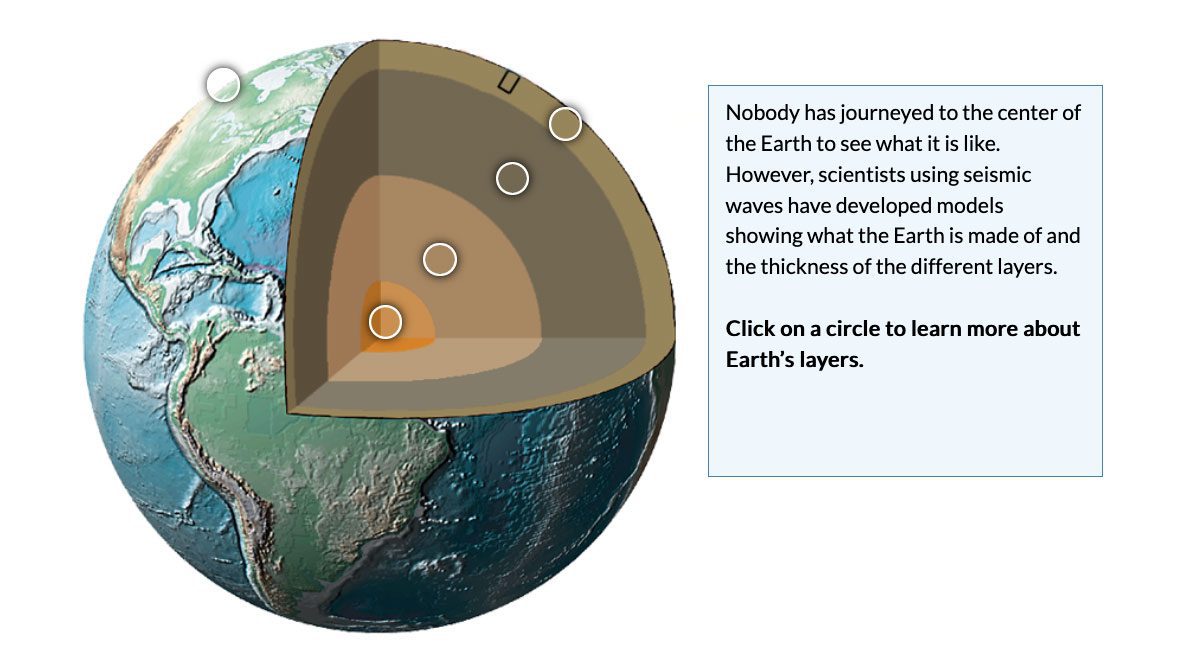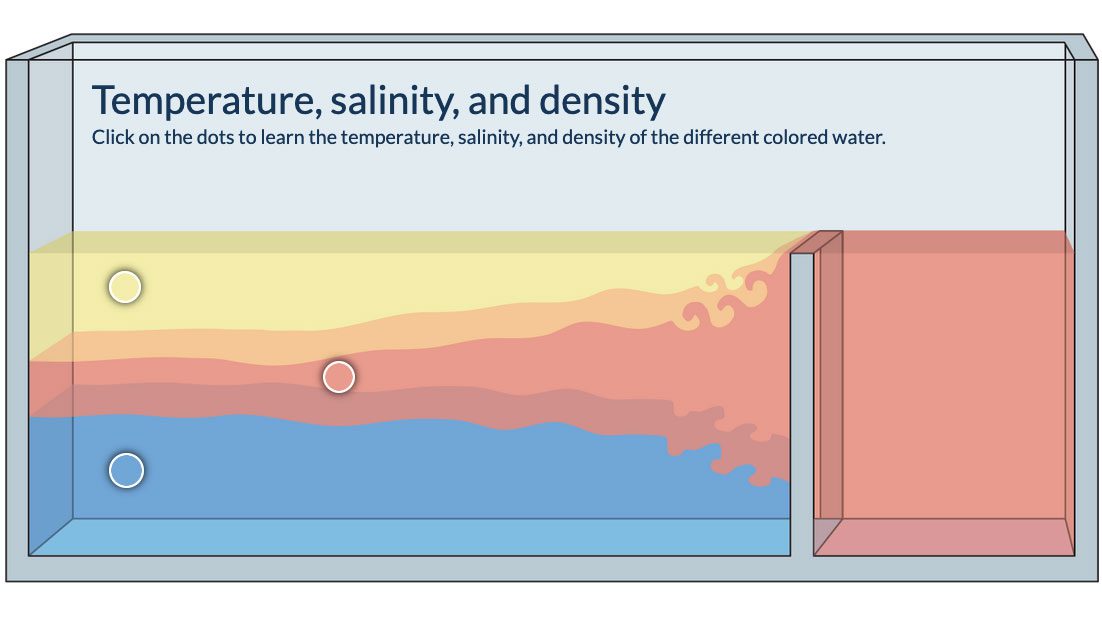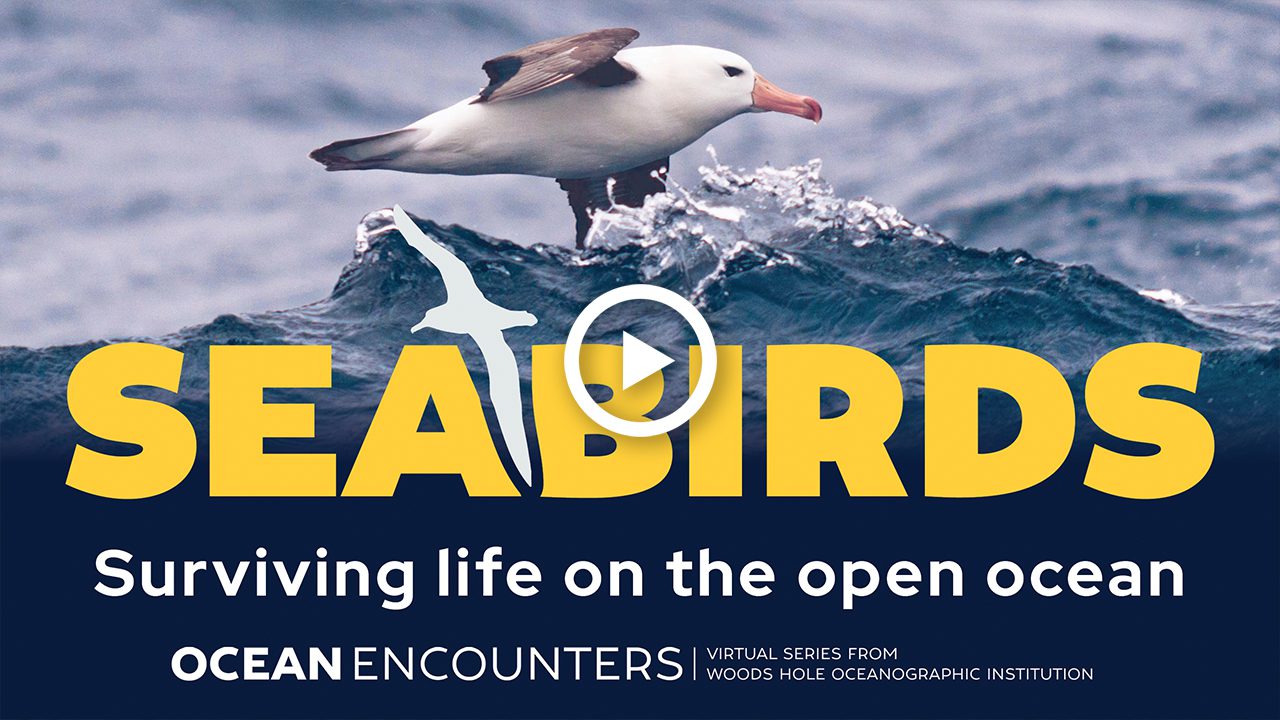Multimedia
The Arctic: Ocean Circulation
Follow the journey of water through the Arctic Ocean. Click the numbers to explore how Arctic Ocean circulation shapes this unique environment.
Read MorePlate Movements
Earth’s surface is always on the move! Learn how sliding, colliding, and sinking tectonic plates create mountains, volcanoes, trenches, and quakes.
Read MorePlate Boundaries
From earthquakes to hydrothermal vents, see how Earth’s restless plates shape the planet. Click to explore boundaries, fault zones, and seafloor features.
Read MoreOcean Twilight Zone: The Human Connection
From food to climate to creativity, the twilight zone plays a surprising role in our lives—showing just how connected we are to the mysterious deep sea.
Read MoreOcean Twilight Zone: Migration
Every night, billions of deep-sea creatures rise to the surface to feed—then vanish by dawn. It’s Earth’s largest daily migration, hidden in plain sight.
Read MoreOcean Twilight Zone: Carbon
From photosynthesizing plankton to poop-powered carbon sinks, discover how ocean life and physics help regulate Earth’s climate.
Read MoreTwilight Zone Technology
Studying the twilight zone is tough—it’s dark, cold, and deep. Explore how scientists use custom tools and robots to explore and uncover its hidden life and secrets.
Read MoreLife in the Twilight Zone
Dive into the twilight zone to explore extraordinary adaptations and the food web that powers this mysterious mid-ocean ecosystem.
Read MoreTwilight Zone Basics
The ocean’s twilight zone lies 2001,000 meters deep—cold, dark, and vast. Learn about one of Earth’s largest habitats and a key frontier for ocean science in this interactive.
Read MoreFast-Spreading Mid-Ocean Ridge
Faster spreading ridges like the East Pacific Rise behave like hot taffy, with more magma and eruptions making the crust spread more fluidly.
Read MoreSlow-Spreading Mid-Ocean Ridge
Dive into the dynamic geology of mid-ocean ridges—explore lava flows, fault scarps, magma chambers, and more by clicking on each seafloor feature.
Read MoreMid-Ocean Ridges: Axial Ridge
Explore the dynamic landscape of mid-ocean ridges—from pillow lavas and lava pillars to deep-sea creatures thriving in this volcanic underwater frontier.
Read MoreTubeworm Anatomy
Explore tubeworm anatomy and discover how these deep-sea creatures survive through a unique symbiotic relationship with bacteria. Click to learn more.
Read MorePhotosynthesis vs. Chemosynthesis
Plants use sunlight to make food. Microbes near deep-sea vents use chemicals instead. Compare how life gets energy when the sun doesn’t shine.
Read MoreHydrothermal Vent Life
Discover the extraordinary creatures living at hydrothermal vents—from giant tubeworms to glowing shrimp—each adapted to thrive in extreme deep-sea heat.
Read MoreVents Around the World
Explore global hydrothermal vents—from mid-ocean ridges to arc volcanoes—and see how confirmed and inferred vents are worldwide.
Read MoreVent Boiling Points
Water boils at different temperatures depending on depth. Click the markers to see how pressure affects boiling points as you descend into the deep ocean.
Read MoreVent Chemistry
Hot fluids from vents mix with seawater, cycling metals like copper and zinc, fueling unique chemical reactions and chemosynthetic life deep in the ocean.
Read MoreHydrothermal Vent Basics
Discover how hydrothermal vents form, what they release, and why these extreme environments are hotspots for ocean chemistry and deep-sea life.
Read MoreHistory of the Earth
Travel back in time through 4.8 billion years of Earth’s history—from the birth of the planet to the rise of life, mass extinctions, and human evolution.
Read MoreEarth’s Anatomy
In this interactive, learn about Earth’s layers, what the Earth is made of, and the thickness of the different layers.
Read MoreTemperature, Density and Salinity
Discover how temperature and salinity shape ocean density—and how even tiny differences help drive the powerful flow of deep ocean currents.
Read MoreBetty Bunce on To Tell The TRUTH (1960s CBS)
Enjoy this throwback segment from the 1960s game show To Tell The Truth featuring WHOI Scientist Emeritus and a woman pioneer in oceanography, Elizabeth “Betty” Bunce.
Read MoreOcean Encounters: Seabirds
Seabirds thrive far from shore, soaring thousands of miles over open ocean—but their oceanic lifestyle also makes them vulnerable to growing environmental threats.
Read More
